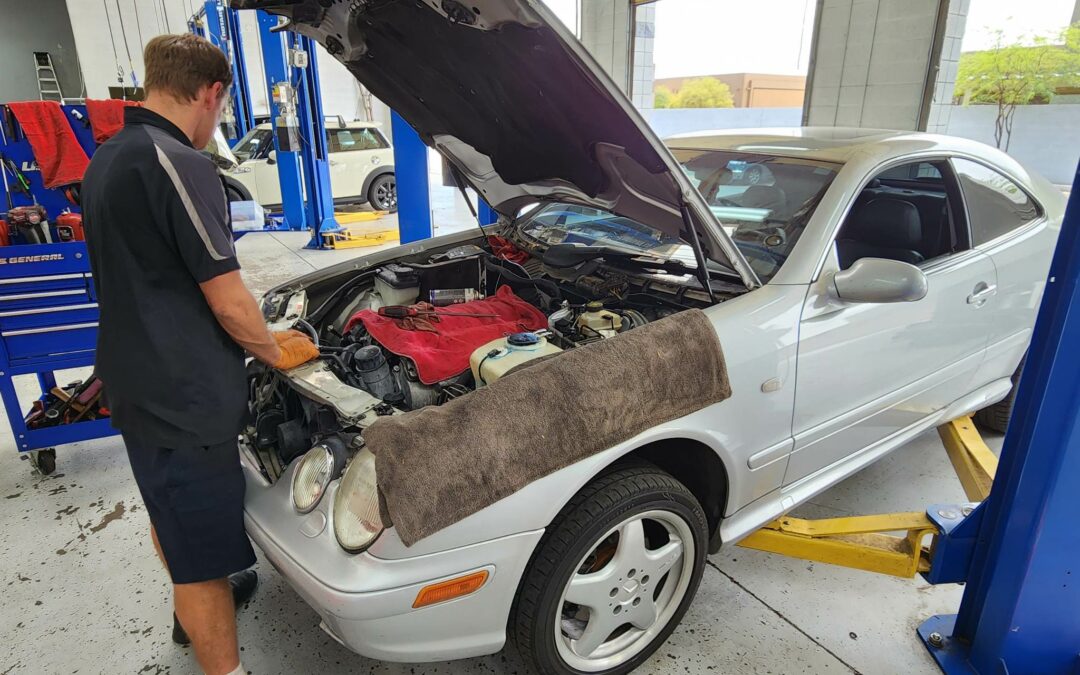Title: Unveiling the Mechanics: Understanding the Differences Between Timing Belts and Serpentine Belts
As the proud owner of a BMW, Mini Cooper, Audi, or Mercedes, you’re undoubtedly aware of the importance of regular maintenance to keep your European vehicle performing at its peak. Two crucial components in your car’s engine are the timing belt and the serpentine belt. In this article, brought to you by Beyer Motor Works, your trusted European auto repair shop in Chandler, Arizona, specializing in BMWs, Mini Coopers, Audis, and Mercedes, we’ll unravel the mysteries of these two belts and highlight the key differences between them.
1. **Functionality:**
– *Timing Belt:* The timing belt plays a critical role in synchronizing the rotation of the crankshaft and the camshaft. This synchronization is crucial for proper engine function, as it ensures that the engine’s valves open and close at the right time in coordination with the pistons’ movement.
– *Serpentine Belt:* In contrast, the serpentine belt is responsible for driving various engine accessories, such as the alternator, power steering pump, air conditioning compressor, and water pump. It ensures these components operate efficiently by transferring power from the crankshaft to these accessories.
2. **Location and Appearance:**
– *Timing Belt:* Typically located inside the engine, the timing belt is covered by a protective cover. It has teeth on the inner side, which mesh with gears on the camshaft and crankshaft, facilitating precise synchronization.
– *Serpentine Belt:* Positioned on the exterior of the engine, the serpentine belt has a smooth surface without teeth. It wraps around various pulleys connected to engine accessories, making it easily identifiable.
3. **Materials and Lifespan:**
– *Timing Belt:* Commonly made from rubber with reinforced fibers or kevlar, timing belts have a specific lifespan and are subject to wear and tear. Regular replacement is crucial to prevent the risk of a snapped belt, which could lead to severe engine damage.
– *Serpentine Belt:* Serpentine belts are typically made from a durable rubber material and may include additional features like ribs for better grip. While they also wear over time, their lifespan is often longer than that of timing belts.
4. **Maintenance and Replacement:**
– *Timing Belt:* Replacement intervals for timing belts vary among different vehicle models but are generally recommended between 60,000 to 100,000 miles. A proactive approach to replacement helps prevent unexpected failures.
– *Serpentine Belt:* While serpentine belts are designed to last longer than timing belts, they should still be inspected regularly for signs of wear and replaced as part of routine maintenance to avoid unexpected failures.
Conclusion:
Understanding the distinctions between the timing belt and the serpentine belt is vital for maintaining the longevity and performance of your European vehicle. At Beyer Motor Works in Chandler, Arizona, our specialized technicians have the expertise to inspect, replace, and maintain these critical components in your BMW, Mini Cooper, Audi, or Mercedes. Trust us for top-notch European auto repair services, ensuring your vehicle runs smoothly on the roads of Arizona. Schedule your maintenance appointment today and experience the Beyer Motor Works difference.


